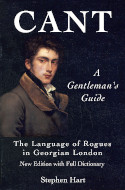THE CONSERVATIVE CLUB
This handsome Club-house, which occupies a portion of the site of the old Thatched House Tavern, 74, St. James's-street, was designed by Sydney Smirke and George Basevi, 1845. The upper portion is Corinthian, with columns and pilasters, and a frieze sculptured with the imperial crown and oak-wreaths; the lower order is Roman-Doric; and the wings are slightly advanced, with an enriched entrance-porch north, and a bay-window south. The interior was superbly decorated in colour by Sang: the coved hall, with a gallery round it, and the domed vestibule above it, is a fine specimen of German encaustic embellishment, in the arches, soffites, spandrels, and ceilings; and the hall-floor is tessellated, around a noble star of marqueterie. The evening room, on the first floor, has an enriched coved ceiling, and a beautiful frieze of the rose, shamrock, and thistle, supported by scagliola Corinthian columns: the morning room, beneath, is of the same dimensions, with Ionic pillars. The library, in the upper story north, has columns and pilasters with bronzed capitals. Beneath is the coffee-room. The kitchen is far more spacious than that of the Reform Club. In the right wing is a large bay-window, which was introduced as an essential to the morning room, affording the lounger a view of Pall Mall and St. James's-street, and the Palace gateway; this introduction reminding us, by the way, of Theodore Hook's oddly comparing the bay-window of a coffee-house nearly on the same spot, to an obese old gentleman in a white waistcoat. Hook lived for some time in Cleveland-row: he used to describe the real London as the space between Pall Mall on the south, Piccadilly north, St. James's west, and the Opera-house east.
This is the second Club of the Conservative party, and many of its chiefs are honorary members, but rarely enter it: Sir Robert Peel is said never to have entered this Club-house except to view the interior. Other leaders have, however, availed themselves of the Club influences to recruit their ranks from its working strength. This has been political ground for a century and a half; for here, at the Thatched House Tavern, Swift met his political Clubs, and dined with Tory magnates; but with fewer appliances than in the present day; in Swift's time "the wine being always brought by him that is president."[28]
[28] The Palace clock has connected with it an odd anecdote, which we received from Mr. Vulliamy, of Pall Mall, who, with his family, as predecessors, had been the royal clockmakers since 1743. When the Palace Gate-house was repaired, in 1831, the clock was removed, and not put up again. The inhabitants of the neighbourhood, missing the clock, memorialized William IV. for the replacement of the time-keeper, when the King inquired why it was not restored; the reply was that the roof was reported unsafe to carry the weight, which His Majesty having ascertained, he shrewdly demanded how, if the roof were not strong enough to carry the clock, it was safe for the number of persons occasionally seen upon it to witness processions, and the company on drawing-room days? There was no questioning the calculation; the clock was forthwith replaced, and a minute-hand was added, with new dials. (Curiosities of London, p. 571.)
John Timbs
Club Life of London Vol. I
London, 1866

